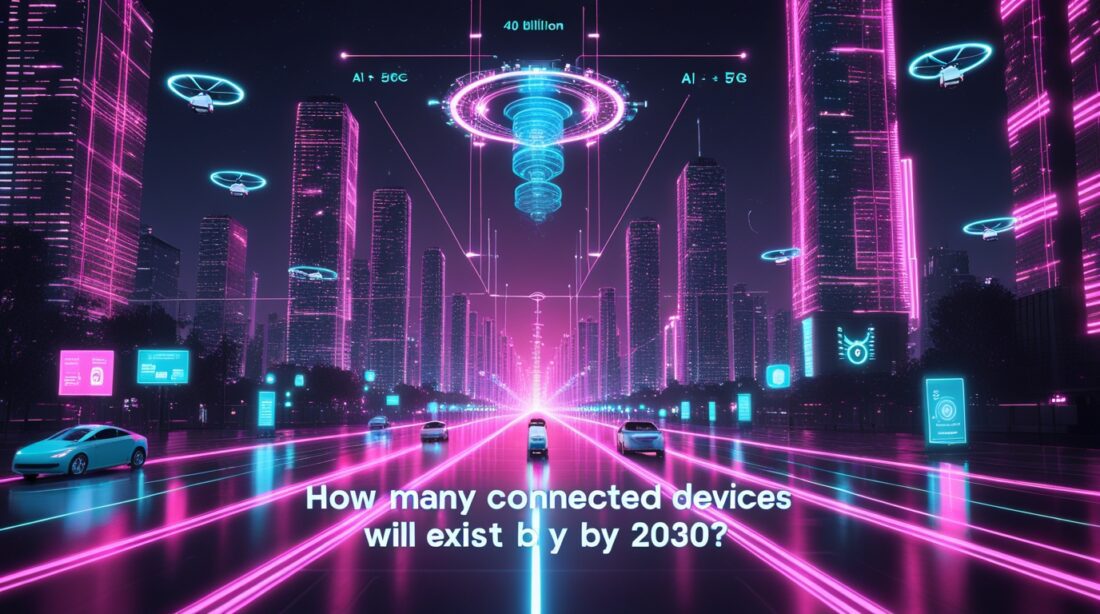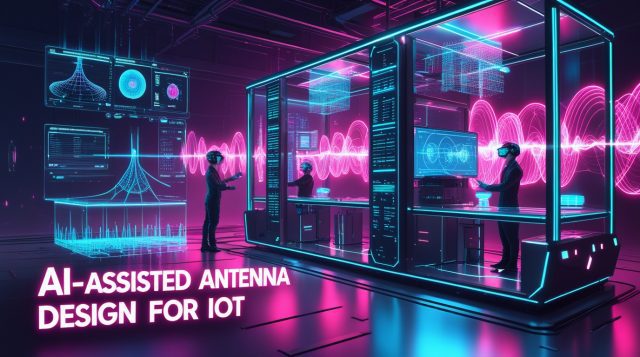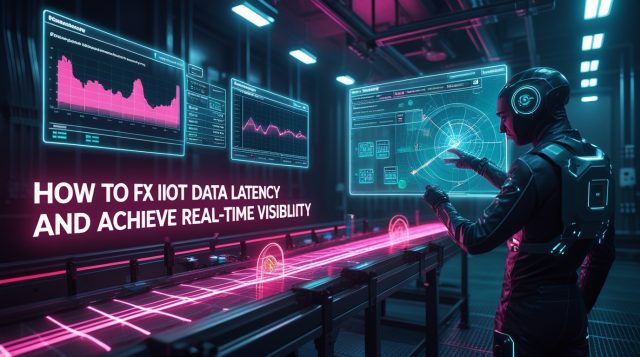The silent, digital nervous system of our planet is growing at an astonishing rate.
Imagine a typical morning: your smart thermostat has already adjusted the temperature to your waking preference, your wearable health monitor is sending a quiet status update to your doctor, and the city’s traffic sensors are dynamically optimizing signal times based on real-time congestion data. This isn’t a scene from a sci-fi movie; it’s the reality being built today by the Internet of Things (IoT).
How many connected devices will exist by 2030?
By the end of 2024, there will be 18.8 billion connected IoT devices globally. Fueled by advancements in AI and the expansion of 5G networks, this number is projected to double, reaching approximately 40 billion by 2030. This represents a massive digital transformation that is quietly reshaping our world, from industrial factories to our own living rooms.
Why the Number of IoT Devices Is Exploding
The staggering growth in connected devices isn’t happening by accident. It’s being driven by a powerful convergence of technological, economic, and societal factors.
The AI and Analytics Engine: IoT is no longer just about connecting devices; it’s about making them intelligent. Artificial Intelligence is at the forefront of corporate strategy, with CEOs discussing it more than any other tech topic in earnings calls.
The integration of AI, including generative AI and edge AI, allows the vast amounts of data generated by IoT sensors to be processed and acted upon in real-time. For a deeper dive into how AI is transforming industrial efficiency, check out how industrial AI agents are slashing energy costs in manufacturing.
This enables predictive maintenance in factories, personalized health insights from wearables, and smarter energy grids. As one executive from AMD noted, “We stand on the brink of an era where edge AI will reshape our world in a profound way.” For more on how edge AI is driving real-time intelligence, explore this detailed analysis on edge AI versus cloud AI.
The Connectivity Backbone of 5G: You can’t have billions of devices talking to each other without a robust, high-speed network. The rollout of 5G technology is a critical enabler, providing the high data transfer rates, increased capacity, and ultra-low latency required for advanced applications like autonomous vehicles and remote surgery.
A key development in 2024 has been the launch of 5G RedCap (Reduced Capability), which offers a cost-effective way to connect a massive number of medium-complexity devices, such as those for high-quality video surveillance. By 2030, cellular IoT connections alone are forecast to surpass 7 billion. To understand how connectivity innovations are transforming industries, read more about industrial Wi-Fi zoning for reliable IoT networks.
The Rise of Hyperconnected Ecosystems: IoT is evolving into what IBM terms the “Economy of Things” (EoT). In this new paradigm, IoT devices become digital assets that can autonomously share, monetize, and transact value.
Think of an electric fleet truck that can automatically pay for its own charging at a smart station without driver intervention. This creates new, fluid value chains that span across entire industries, dramatically increasing the utility and adoption of connected devices. For insights into how these ecosystems are driving market growth, see the rise of the industrial AI data marketplace. Additionally, learn how blockchain is enhancing trust in such ecosystems with this exploration of blockchain-verified reforestation.
A Glimpse at the Numbers: IoT Forecasts to 2030
Different research firms have slightly varying methodologies, but the overarching trend is unanimous: explosive growth. The table below summarizes key forecasts for the IoT landscape leading up to 2030.
| Forecast Category | 2023/2024 Baseline | 2030 Projection | Source |
|---|---|---|---|
| Global Connected IoT Devices | 16.6B (end of 2023) | 40.4B (by 2034) | IoT Analytics, Transforma Insights |
| Cellular IoT Connections | 3.9B (end of 2024) | 7.2B | Ericsson Mobility Report |
| Global IoT Market Revenue | USD 1.18 Trillion (2023) | USD 2.65 Trillion | Grand View Research |
| Average Connected Devices Per Person | N/A | 13 | Quantumrun Forecast |
The Industrial and AI Revolution: Where the Real Transformation Happens
While consumer devices like smart speakers get a lot of attention, the most profound IoT revolution is occurring in industrial and enterprise settings. This is where the fusion of AI and IoT, or Industrial AI Analysis, is creating immense value.
In manufacturing, AI-driven asset management platforms like IBM Maximo are using data from IoT sensors to predict equipment failures before they happen, optimizing performance and slashing downtime. For a closer look at how predictive maintenance is transforming factories, check out why predictive maintenance AI leads factory efficiency in 2025. This shift from reactive to predictive maintenance is a game-changer for operational efficiency. To explore how AI is reducing downtime through sound-sensing technology, visit this article on edge AI industrial sound sensing.
Furthermore, the complexity of these growing IoT ecosystems is fueling a parallel boom in the IoT integration market, which is projected to grow from USD 3.83 billion in 2023 to USD 23.33 billion by 2030—a blistering CAGR of 28.3%. Companies are realizing that connecting devices is one thing; making them work together seamlessly and securely is where the true challenge and opportunity lie. For more on overcoming integration challenges, read about solving the legacy PLC AI bottleneck in industry. To understand the broader impact of IoT platforms, check out this comprehensive guide to the top industrial IoT platforms for 2025.
FAQs: Your Questions About the IoT Future, Answered
How many IoT devices will there be in 2030?
Current forecasts project there will be approximately 40 billion connected IoT devices globally by 2030. This is based on a compound annual growth rate of around 11-13%.
What is driving the massive growth in IoT devices?
The growth is primarily driven by three factors: the integration of Artificial Intelligence (AI) for data analysis, the widespread rollout of high-speed, low-latency 5G networks, and the evolution towards interconnected “Economy of Things” ecosystems where devices can autonomously transact.
Which region will have the most IoT devices?
Greater China is expected to be the largest region by number of IoT connections, followed closely by Europe and North America. However, the Asia Pacific region as a whole is anticipated to see the highest growth rate, fueled by rapid digital transformation and smart city initiatives. For more on regional IoT trends, see Southeast Asia’s surge in AI cloud services growth.
What are the main connectivity technologies for IoT?
The IoT connectivity landscape is dominated by a few key technologies. Wi-Fi (31%) and Bluetooth (25%) lead for short-range connections, while cellular IoT (21%) is crucial for wide-area applications. Low-Power Wide-Area (LPWA) technologies like NB-IoT and LTE-M are also growing rapidly for devices that need long battery life. For a deeper dive into IoT connectivity solutions, explore connectivity as a service transforming Industry 4.0.
The journey to 40 billion connected devices is more than a numbers game. It’s the story of our world becoming more responsive, efficient, and intelligent. From the factory floor to the city street, the silent, seamless communication between machines is building a future that is deeply interconnected.
TL;DR: The number of connected IoT devices is set to double from about 18.8 billion in 2024 to roughly 40 billion by 2030. This explosion is powered by the fusion of AI and IoT, the expansion of 5G networks, and the rise of new ecosystems where devices can autonomously transact data and value.
This article is based on market research and forecasts from leading firms including IoT Analytics, Transforma Insights, Ericsson, and Grand View Research. All statistics and insights are sourced from their publicly available reports.
Stay curious. To get more data-driven insights on the future of technology delivered directly to your inbox, subscribe to our newsletter below.



